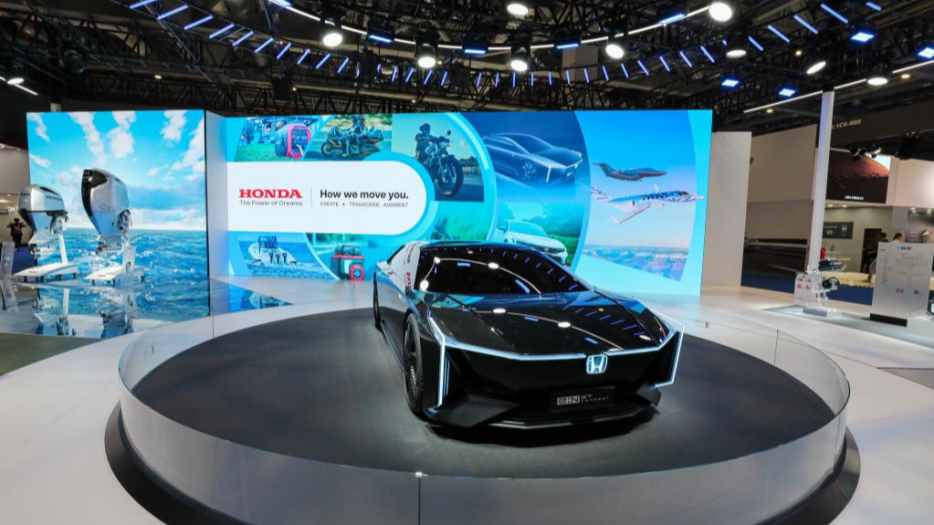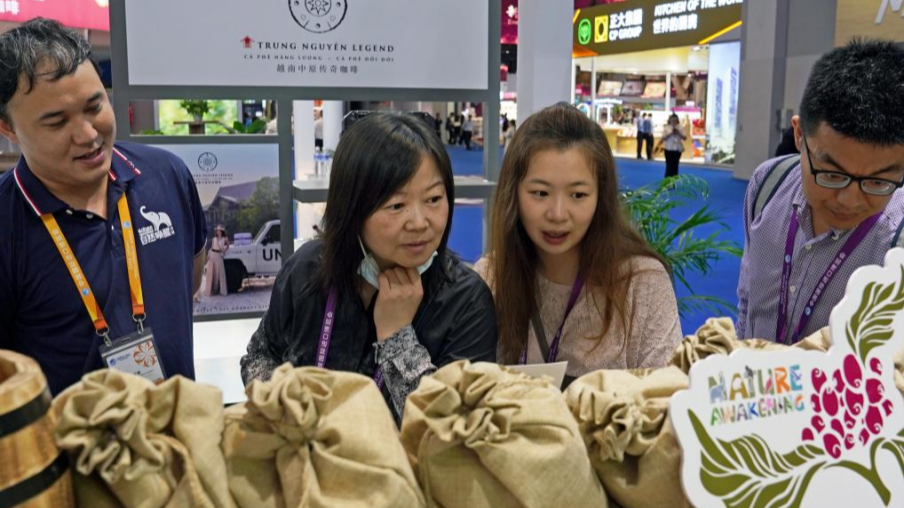
A Honda e:N Concept vehicle displayed at the 6th China International Import Expo in east China's Shanghai, November 5, 2023. [Photo/Xinhua]
By Jeffrey Towson
The seventh China International Import Expo (CIIE) and the seventh Hongqiao International Economic Forum (HQF) are both coming up in November.
I really like these types of big China events. They are great for catching up on what's happening on the ground in China. Besides, they are massive and pretty fantastic.
I always bring a list of what I am trying to learn at conferences. Here are my three goals for these events.
Goal 1: To get smarter about the rapidly evolving situation in China's auto industry
My research is in China technology. And things have been pretty crazy in this area. There is, unfortunately, a huge disconnect in the tech world between what is talked about internationally and what has been happening on the ground in China.
That's frustrating. But also, a good opportunity for those of us that write in depth on this subject.
The epicenter of the China tech discussion this year is automobiles.
China is the world's largest car market. China accounts for approximately 30 percent of global sales. In 2023, China's vehicle sales grew 12 percent to over 30 million units. And China now accounts for almost three out of every five electric vehicles (EVs) sold worldwide. These data make China a key market for most foreign automakers. It also makes it the largest source of growth on the horizon.
However, it's really not just about market size anymore. It's more about tech and innovation.
China's auto market is very competitive. And we are seeing auto makers (both foreign and domestic) innovating at a frantic pace. New EVs are being launched every month. New tech breakthroughs are happening in both auto and batteries.
For foreign automakers, China is the Olympics of auto innovation and competition. In new breakthroughs. In design. In production at scale. Competing in the China auto market makes you better. More and more, we are seeing foreign automakers using their China teams and operations as the benchmark for their other operations. It's an innovation epicenter for auto.
And this is going to be a big deal this year at the exhibition and forum. The auto exhibition is the first place I am going to visit in the convention hall. There are going to be demonstration areas for new materials, autopilot technology and, of course, energy storage for cars.
And I expect this to be a big topic of discussion at HQF.
Goal 2: Reassess the tech innovation situation between China and the world
I like auto but I'm not an auto expert. My research is in China tech businesses, especially the digital innovators. And I have taught both digital strategy and "doing business in China" at Peking University and the China Europe International Business School. If you search for topics like Uber vs. Didi, Mobike vs. ofo and Tencent vs. Facebook, you'll likely find my articles going back a decade.
To say I keep a close eye on foreign tech companies active in China is an understatement. I'm constantly looking at their imported products, tech and services. And their new initiatives.
That's what I'm looking for at the events. New announcements. New companies entering for the first time. New services.
My big question is: What is coming next in technology imports and investment into China?
Let's look at some of the foreign tech exhibitors: Japanese tech leaders such as Mitsubishi and Sony are going to be at this year's expo. That's important. They're on my watchlist. Everyone writes about the U.S. and China in tech, but Japan-China is more exciting in many ways.
The German and northern European engineering companies are going to be well represented. There is a long history of tech and industrial work between Germany and China. I spend a lot of time talking about China in that region.
And of course, we will also see some American tech giants. I suspect much of the conversation will be about the American chip companies present.
The Hongqiao Forum should be a good indicator of where technology will impact China's growth in the next three to five years.

Visitors look at Honduras coffee, which enters Chinese market for the first time, at the 6th China International Import Expo in east China's Shanghai, November 5, 2023. [Photo/Xinhua]
Goal 3: Get an update on long-term consumption growth in China
The topic at the center of these events, in my opinion, is long-term growth in domestic consumption. This is what everyone talks about when projecting China GDP growth over the next 10 years. Growth in domestic consumption is a constant topic in the international press.
Many people are watching for China's GDP growth to gradually shift from net exports and investment to consumption. Economists argue how fast this will happen.
And it's an important question. But most businesses don't think this way in terms of GDP growth drivers. They think in terms of household consumption over the next five to 10 years. That is usually what drives import decisions and investment. It's what shows up in future income statements. And this is what I'm looking for an update on.
The Hongqiao Forum should be very good for this question. Lots of keynotes and discussions. And it's the people who can talk about this at a detailed level.
That's the key because household consumption rates can vary significantly by sector and by product type. So, you really want to take consumption growth apart sector by sector. And, if possible, product category by product category.
For example, Chinese food, tobacco, and liquor spending has been growing at three times the rate of spending on clothing and apparel. About 6 percent versus 2 percent, according to the National Bureau of Statistics. But medicine and medical service spending have been growing even faster (at about 9 percent).
But then you want to take it apart by household type. Those numbers are for urban households. For rural households, the situation is different. Chinese food, tobacco, and liquor spending and clothing and apparel spending have both been higher at 7-8 percent. And medicine and medical service spending has been growing faster at 11 percent.
My standard advice to those looking at China is you have to go as small as possible. You want to dig into specific categories and companies.
Last Point: China's exhibitions and forums are pretty awesome
Not to generalize, but China is really good at putting on these types of events. If you haven't been to one of these, this is a good opportunity.
The National Exhibition and Convention Center in Shanghai gets filled with exhibition booths and hundreds of thousands of people during the CIIE. The exhibition has six major categories for products: food and agricultural products; consumer goods; medical equipment and healthcare products; trade in service; automobiles; intelligent industry and information technology.
These categories are a good indication of where we can expect activity by foreign businesses in China.
Jeffrey Towson, a special commentator on current affairs for CGTN, is a consultant and keynote speaker focused on the digital strategies of the best tech companies of the U.S., China and Asia.

 中文
中文



